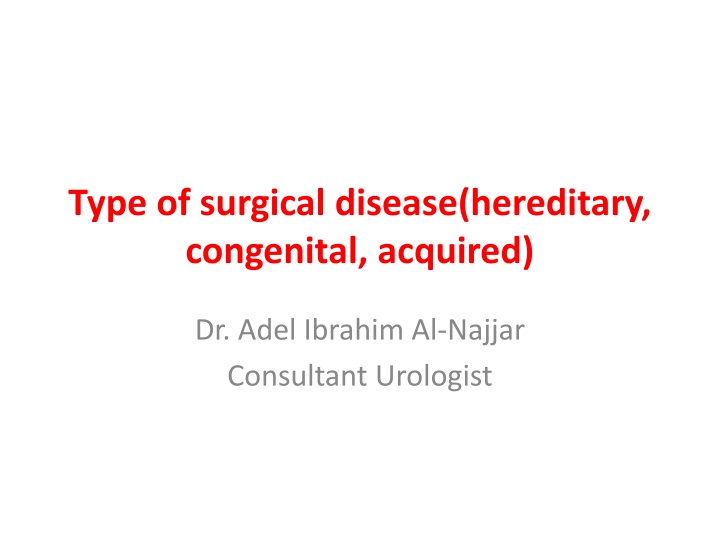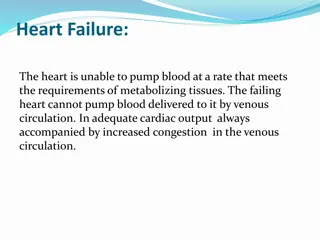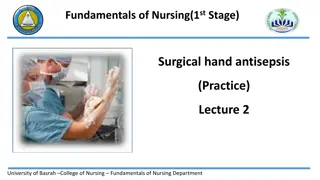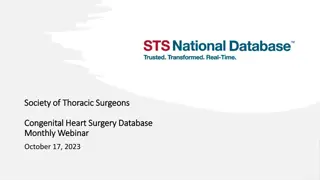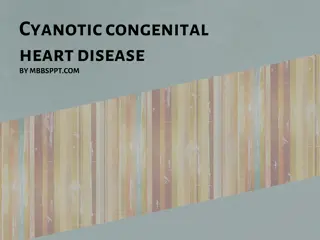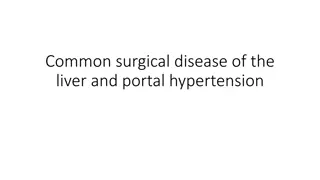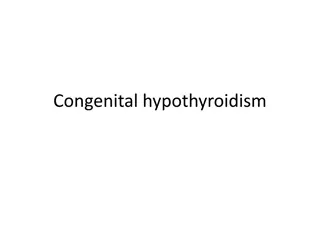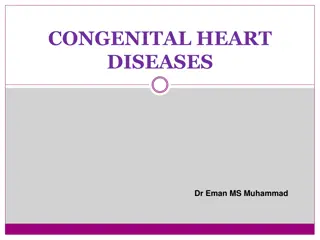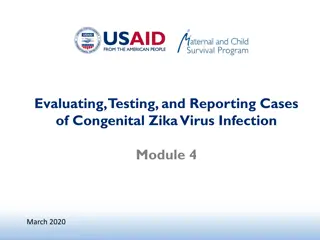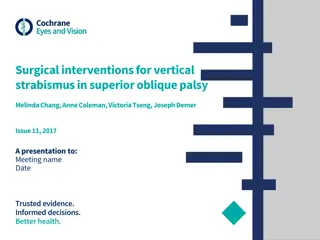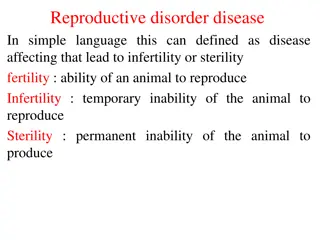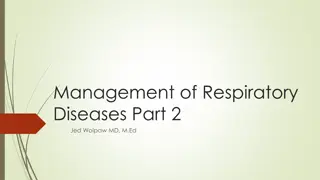Hereditary, Congenital, and Acquired Surgical Diseases
Hereditary diseases involve the transmission of physical characteristics from parents to offspring through genetic codes. Examples of single-gene diseases like achondroplasia and beta-thalassemia are discussed along with treatments for genetic diseases like symptomatic treatment and solid organ transplants.
Download Presentation

Please find below an Image/Link to download the presentation.
The content on the website is provided AS IS for your information and personal use only. It may not be sold, licensed, or shared on other websites without obtaining consent from the author.If you encounter any issues during the download, it is possible that the publisher has removed the file from their server.
You are allowed to download the files provided on this website for personal or commercial use, subject to the condition that they are used lawfully. All files are the property of their respective owners.
The content on the website is provided AS IS for your information and personal use only. It may not be sold, licensed, or shared on other websites without obtaining consent from the author.
E N D
Presentation Transcript
Type of surgical disease(hereditary, congenital, acquired) Dr. Adel Ibrahim Al-Najjar Consultant Urologist
Hereditary is the transmission of physical characteristics in living organisms from organisms to their offspring. It occurs through the offspring sharing the genetic code of the parents through half of the genetic code from the mother, and half of the genetic code from the father. This fusion occurs when the father's sperm combines with the mother's egg.
EXAMPLES OF SINGLE-GENE DISEASES AND RATES OF OCCURRENCE Achondroplasia is a bone growth disorder that causes shortlimbed dwarfism in which there is a problem converting cartilage into bone
Beta-thalassemia is a blood disorder that reduces production of hemoglobin and causes anemia, bone, and organ damage Cystic fibrosis is an inherited disease characterized by a buildup of thick, sticky mucus that causes respiratory and digestive problems Cystic fibrosis (CF) is an inherited disorder that causes severe damage to the lungs, digestive system and other organs in the body.
Sickle cell disease (SCD) is a progressive genetic disease characterized by blood vessel damage and blocked blood vessels. In SCD, high levels of abnormal sickle hemoglobin in red blood cells lead to unpredictable and life-threatening complications and chronic organ damage, including organ Failure Hemophilia is a an inherited bleeding disorder where blood fails to clot properly. Problems with hemophilia can range from spontaneous bleeds in joints, muscles, and organs as well as prolonged bleeding following surgery. The bleeding is caused by a missing protein. Depending on the missing protein, a person may have either hemophilia.
Types of Treatment for Genetic Diseases Symptomatic treatment Relieving symptoms is one of the ways that treating a genetic disease can potentially improve patient outcomes. For example, people with hemophilia may need a treatment that replaces the clotting factor that their bodies fail to produce. Solid organ transplant
For genetic diseases that only affect one organ in the body, solid organ transplantation may be an option. Removing a diseased organ andreplacing it with a donor organ can help prevent disease complication and may help improve life expectancy. Solid organ transplant, as a potential curative option, can occur in the following diseases: Metabolic liver disease Polycystic kidney disease Congenital heart disease When considering treatment options like solid organ transplantation, people should discuss their specific situation and the risks and benefits with their doctor.
Bone marrow transplant (BMT) About 65 years ago, another approach for treating certain genetic diseases became available: bone marrow transplant (BMT). This treatment is also called stem cell transplant or hematopoietic stem cell transplant (HSCT).
Difference between genetic and hereditary Genetic diseases are pathologies that occur because of an alteration in our genetic material or DNA. Mutations can be caused by an error in DNA replication or by environmental factors (e.g. cigarette smoke or exposure to radiation). In this case, the disease can manifest itself at any age. Genetic diseases may be transmitted by parents to their offspring or not. A hereditary disease is caused by alterations in the genetic material, transmitted from parents to children. While there is also a change in the DNA, the key characteristic here is the fact that the disease is transmitted, because the alteration is presence in all the cells of the organism including in the germline cells as we will explain below.
Acquired An acquired is a medical condition that develops after the fetus is born. Unlike a congenital defect that is present at birth. A congenital defect may precede an acquired disorder, such as: Eisenmenger syndrome the development of pulmonary hypertension (high blood pressure in the lungs) due to an untreated congenital heart defect. The disease can cause complications including permanent heart and lung damage. Nonsurgical treatments focus on easing symptoms, but there is no cure
